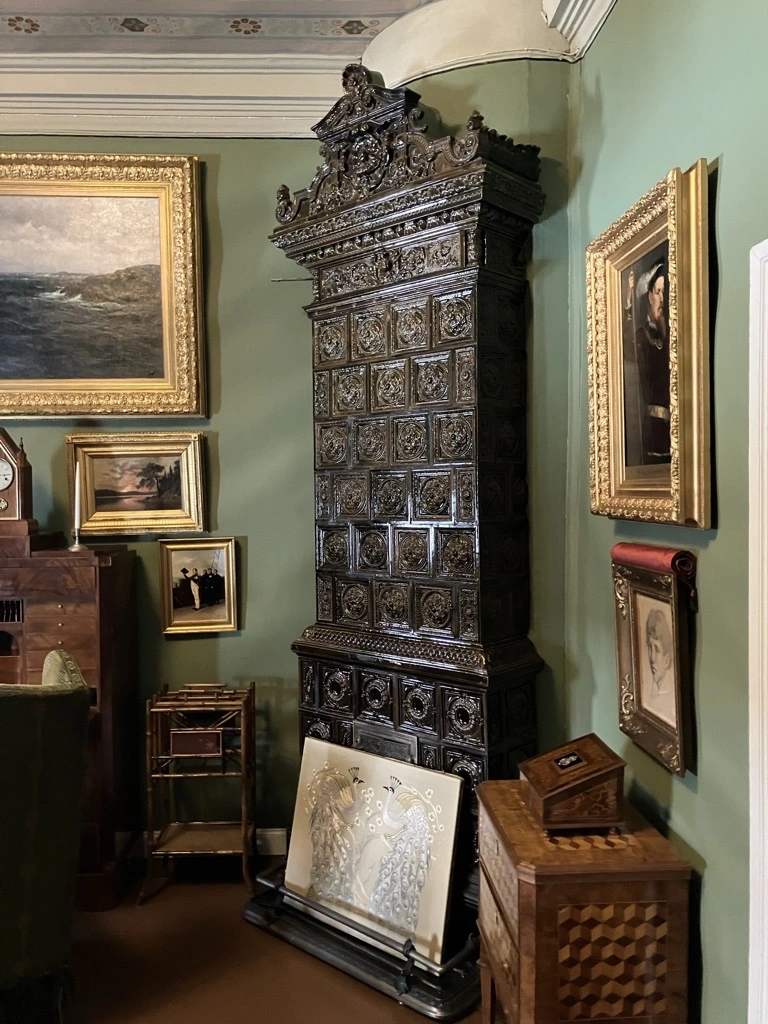
Tiled stoves

Tiled stoves
The house was originally heated with firewood that was burnt in the tiled stoves, a task that demanded considerable effort from the servants, particularly during the cold winter months.
A tiled stove is a highly efficient type of masonry heater developed in the Nordic countries during the 18th century. Its tall, ceramic-tiled structure contains a system of flues that directs the hot air and smoke through the stove before exiting through the chimney. This design allows the stove to store heat in its heavy masonry walls and release it slowly over many hours, keeping rooms warm long after the fire has gone out.
In 1874, Alfred Jacobsson co-founded the Turku Tile Factory, where he briefly served as its first managing director.
The museum displays both stoves that are original to the building and others that were relocated here when the museum opened in 1965. The brown, richly ornamented tiled stove was produced at the Turku Tile Factory. The tiled stoves from the Jacobsson family’s original home have not been preserved.

